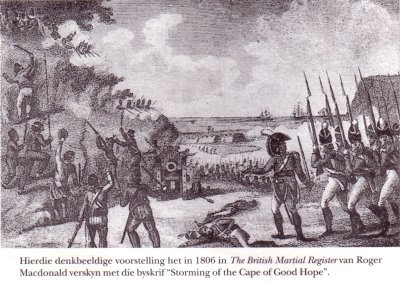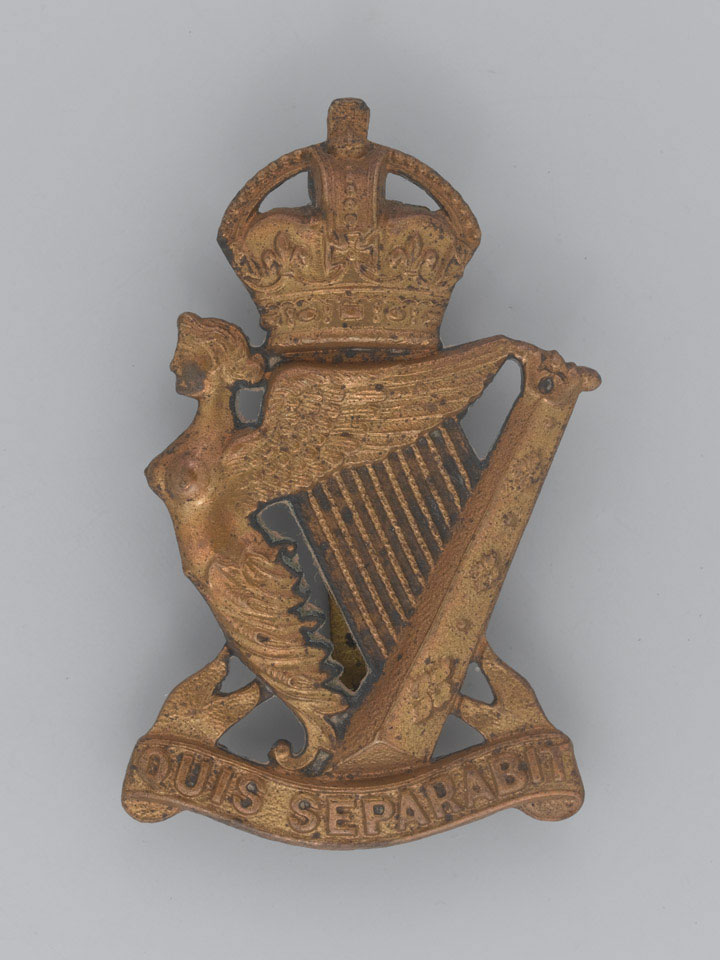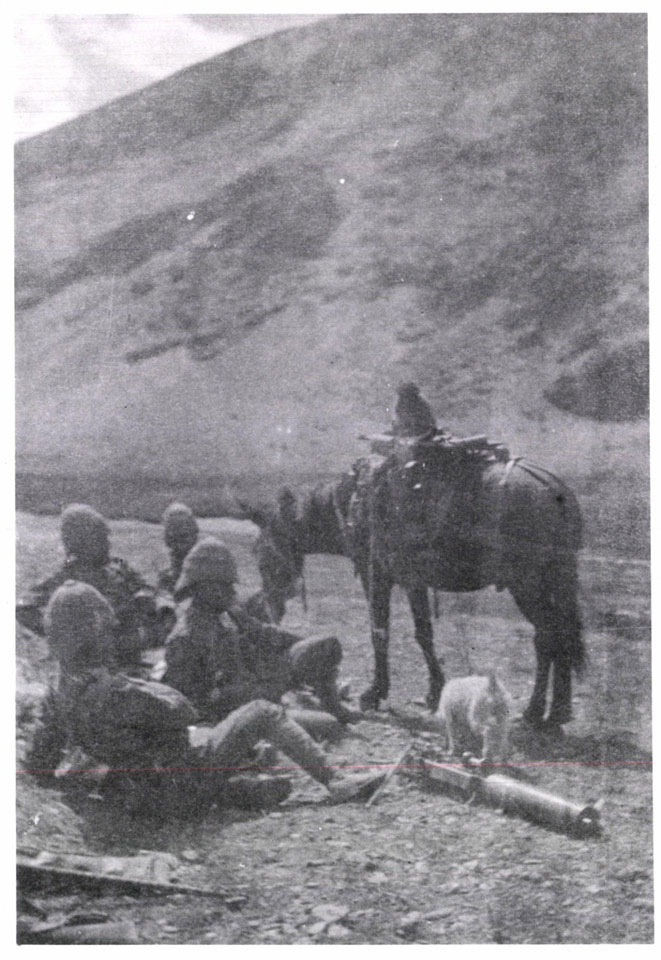
Good evening folks and welcome back to the final day of this #BattalionCensus week. I've been really overwhelmed with the positive response to these threads, so thank you for all of your support!
Our final regiment of this week is the Royal Irish Rifles.
1/
Our final regiment of this week is the Royal Irish Rifles.
1/
2/ In common with so many of the Irish regiments, the story of the Royal Irish Rifles begins with the French Revolutionary Wars. In 1793, Major William Fitch was commissioned to raise a regiment of foot in Dublin which was subsequently titled the 83rd Regiment of Foot. 

3/ In October, General Sir Cornelius Cuyler (pictured) raised a regiment at Shrewsbury. Titled the 86th Regiment of Foot, the regiment was assigned to the county of Shropshire, although the majority of volunteers came from the counties of Yorkshire, Lancashire and Cheshire. 

4/ The 83rd initially saw service in the West Indies, where it fought in the 2nd Maroon War and the capture of Saint-Domingue (modern Haiti). The battalion returned to Britain in 1802, although many of its men were transferred to supplement other battalions in the Caribbean.
5/ In 1795, the 86th served as marines with the Royal Navy before reforming at the Cape of Good Hope in 1796. It moved on to India in 1799, Ceylon in 1800, before serving in the Egyptian Campaign from 1801. The battalion returns to India in 1802.
(NAM 1969-02-8-1)
(NAM 1969-02-8-1)

6/ With the outbreak of the Napoleonic Wars in 1803, the 83rd was sent to occupy the Cape of Good Hope. It would later serve in the 4th Cape Frontier War, before redeploying to Ceylon where it fought in the 3rd Kandyan War.
(Image courtesy of battle.blaauwberg.net)
(Image courtesy of battle.blaauwberg.net)

7/ The 83rd raised a 2nd Battalion in 1804 (primarily men from the Royal Lancashire Militia) which saw extensive service during the Peninsular War, fighting at Talavera, Busaco, Ciudad Rodrigo, Badajoz, Salamanca, Vitoria, Nivelle and Toulouse.
(NAM 1998-06-51-1)
(NAM 1998-06-51-1)

8/ The 86th saw extensive service in India throughout this period, serving in the 2nd Maratha War - including the disastrous siege of Bhurtpore (modern Bharatpur) - the occupation of Goa, and the capture of the islands of Réunion & Mauritius.
(British Library HMNTS 10057.b.5)
(British Library HMNTS 10057.b.5)

9/ The 86th change county affiliation twice during this period, being assigned first to province of Leinster and later to County Down. For its service in the Indian Ocean, the regiment gained the prefix ‘Royal’ and was henceforth known as the 86th (Royal County Down) Regiment. 

10/ The 86th remained in India and fought in the 3rd Anglo-Maratha War (also known as the Pindari War) before joining the 83rd in Ceylon to serve in the 3rd Kandyan War. The 86th returned to Britain in 1819 after 24 years’ service abroad.
(British Library P156)
(British Library P156)

11/ The 83rd however were retained until the conclusion of the Anglo-Burmese War, finally returning to Britain in 1826 - over twenty years since the original 1st Battalion had left for South Africa. Both battalions saw further service overseas, the 86th in…
(NAM. 1974-05-34-8)
(NAM. 1974-05-34-8)

12/…the West Indies (1827-1837) and the 83rd in Canada (1834-1839). Both regiments would serve in India from the 1840s to the late 1850s, where they saw action during the Indian Mutiny. In 1859, the 83rd were granted the designation ‘County of Dublin’.
(NAM 1982-04-412-28)
(NAM 1982-04-412-28)

13/ A further period of garrison duty beckoned for both regiments; the 83rd in Ireland, Gibraltar, Indian & South Africa, the 86th in Britain, Gibraltar, Mauritius, South Africa and Bermuda. As part of the Cardwell Reforms, the two regiments were linked together to share a…
14/… recruiting district at Victoria Barracks, Belfast.
The 1881 Childers Reforms saw the two regiments amalgamate to form The Royal Irish Rifles, although neither regiment had a rifle or light infantry heritage. The regiment recruited from the counties of Antrim, Down & Louth
The 1881 Childers Reforms saw the two regiments amalgamate to form The Royal Irish Rifles, although neither regiment had a rifle or light infantry heritage. The regiment recruited from the counties of Antrim, Down & Louth

15/ At the time of the amalgamation, 1/Irish Rifles were fighting in the 1st Boer War whilst the 2nd was in garrison in Bermuda. The 2/Irish Rifles served in the Suakin Expedition in the Sudan, and later served in South Africa during the 2nd Boer War.
(NAM 1978-08-97-1)
(NAM 1978-08-97-1)

16/ A detachment from the 1/Irish Rifles (pictured) would serve in Major Francis Younghusband's Tibet Expedition in 1904. In 1911, the battalion were garrisoned at Alexander Barracks in Maymyo, Burma, and consisted of 33 officers & 982 other ranks.
(NAM 1968-10-65-69)
(NAM 1968-10-65-69)

17/ A quick reminder of my methodology and use of sources (see link below):
A quick note on Geography and terminology too:
https://twitter.com/MoseleyMAJ/status/1379137251314110474?s=20
A quick note on Geography and terminology too:
https://twitter.com/MoseleyMAJ/status/1380226337521217542?s=20
18/ Of the 982 men of the 1/Irish Rifles, 85% were born in Ireland. The largest minority of men were English born (13%), although 17 men’s place of birth was either unknown or indecipherable. 

19/ It is not possible to assess how many men were born in the regiment’s ‘home province’, as the regiment’s recruiting area spans two provinces – Ulster and Leinster. However, almost half of the battalion (46%) were born with the regimental recruitment area of Antrim (315)… 

19/…Down (118) & Louth (18).
It is also worth adding that two localities within Ulster – Newry & Lisburn – lie on the borders of the counties of Antrim and Down. On this occasion I have included recruits born in there within the County Down sample, as County Down…
It is also worth adding that two localities within Ulster – Newry & Lisburn – lie on the borders of the counties of Antrim and Down. On this occasion I have included recruits born in there within the County Down sample, as County Down…

20/…was recorded in all the entries where the town and county were both listed.
County Dublin provided the second highest number of men in the battalion; 230 individuals. Counties Laois (Leinster) and Leitrim (Connacht) did not produce a single soldier within the battalion.
County Dublin provided the second highest number of men in the battalion; 230 individuals. Counties Laois (Leinster) and Leitrim (Connacht) did not produce a single soldier within the battalion.

21/ Of the 105 English born men serving within the regiment, 66 were born in the South East of England (43 from London and Middlesex) with a further 18 from the North West of England. 

22/ A further 16 men were born in Scotland (primarily in the South West of the country) along with two Welshmen and a lone Channel Islander.
Of those born outside of Britain (11), five were born in India, two in Malta, and one each in Australia, Canada, Malaysia and the USA.
Of those born outside of Britain (11), five were born in India, two in Malta, and one each in Australia, Canada, Malaysia and the USA.

Fini/ And that's it for this week! Please feel free to like, share and comment.
'Irish' Week has been a blast, and I am really pleased to announce that next month will be a #BattalionCensus double header, with a 'city' week themed around regiments that recruited in primarily...
'Irish' Week has been a blast, and I am really pleased to announce that next month will be a #BattalionCensus double header, with a 'city' week themed around regiments that recruited in primarily...
Fini (cont.)/...and a 'Celtic' week looking at a mix of Irish, Welsh & Scottish regiments. August will mark an exciting milestone in the #BattalionCensus project as I will have a 'full set' of Census Returns for the Irish and Welsh regiments of the British Army. I hope you'll...
PS/... join me in August @kayneagle @stecallaghan01 @BenJSkipper @ErnestMalley @Robin_XBD @madeofstone71 @olly2518 @historian1914 @DrGavinHughes @DrCiaranMcDonn @bermicourt @carole1418 @scotty_thomo @mcribbHistory @wartimeni @tomjmegan ...
PPS/…@bazzdgrogan @VeteranIrish @adbrora @JennMForster @WW1geek_andy @Medical_Int @Peter_Molloy_ @CirAssn @wampasmudge @irishgirl71126 @MarcHoffrichter @DanJBray @DWB55 @bighappyhead @AnthonyOD10 @LionShamrock @bigandylock @HistoryandMoore @battleguide @irelandbattles
• • •
Missing some Tweet in this thread? You can try to
force a refresh









